

Queer Places:
18 rue de l’Odéon, 75006
Paris, France
12 Rue Lalande, 75014 Paris,
France
Cimetière du Montparnasse
Paris, City of Paris, Île-de-France, France
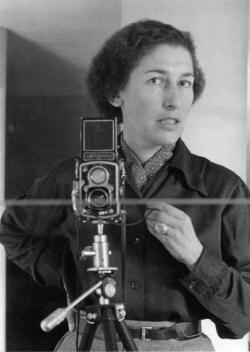 Gisèle Freund (born Gisela Freund; December 19, 1908[1] in Schöneberg District, Berlin – March 31, 2000[1] in Paris) was a Jewish German-born photographer-photojournalist, famous for her documentary photography. She fled from Nazi Germany to Paris in 1933. Once in Paris, Freund continued to work on her art and began studying at the Sorbonne, where she earned her PhD. in 1936. Among her assignments as a photographer in France was a series of images on the effects of the Depression in England for Life Magazine. In Paris, she became friends of
Sylvia Beach and
Adrienne Monnier. In 1935 Adrienne arranged a marriage of convenience for Gisèle with Pierre Blum so that Gisèle could obtain a visa to remain in France legally. However, later Gisèle had to flee from France and with the help of friends she escaped to Argentina. In 1947 Gisèle Freund was the first woman to sign a contract with Magnum Photos agency (as a Latin America contributor), but by 1954 she was declared persona non grata by the U.S. Government at the height of the Red Scare for her socialist views, and Robert Capa forced her to break ties with Magnum Photos.
Gisèle Freund (born Gisela Freund; December 19, 1908[1] in Schöneberg District, Berlin – March 31, 2000[1] in Paris) was a Jewish German-born photographer-photojournalist, famous for her documentary photography. She fled from Nazi Germany to Paris in 1933. Once in Paris, Freund continued to work on her art and began studying at the Sorbonne, where she earned her PhD. in 1936. Among her assignments as a photographer in France was a series of images on the effects of the Depression in England for Life Magazine. In Paris, she became friends of
Sylvia Beach and
Adrienne Monnier. In 1935 Adrienne arranged a marriage of convenience for Gisèle with Pierre Blum so that Gisèle could obtain a visa to remain in France legally. However, later Gisèle had to flee from France and with the help of friends she escaped to Argentina. In 1947 Gisèle Freund was the first woman to sign a contract with Magnum Photos agency (as a Latin America contributor), but by 1954 she was declared persona non grata by the U.S. Government at the height of the Red Scare for her socialist views, and Robert Capa forced her to break ties with Magnum Photos.
Though she was an accomplished and respected photojournalist who undertook assignments for Time and Life, among many other publications, Gisèle Freund is today best remembered as a chronicler of the vibrant bohemian community of artists and writers that made its home in Paris during the 1930s.
These artists included a wide variety of experimental thinkers who created innovative and influential work, from Gertrude Stein's literary "cubism" to Jean Paul Sartre's existential absurdism to Man Ray's surreal dadaism. Freund's carefully observant portraits of many of these leading figures of 1930s Paris captured the dynamic tension of a creative community poised on the edge of exhilaration and despair during the years between the two world wars.
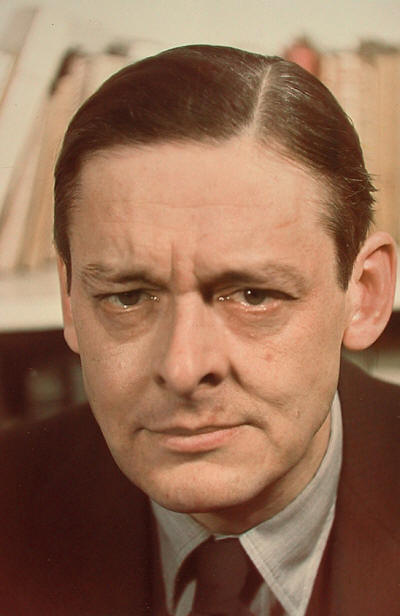
T.S. Eliot by Gisèle Freund
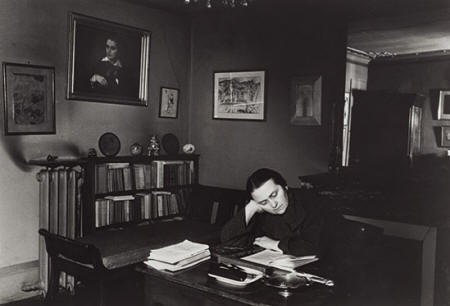
Adrienne Monnier, 1935, by Gisèle Freund
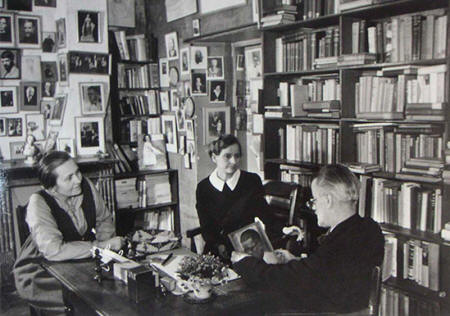
James Joyce with Sylvia Beach and Adrienne Monnier, 1938, , by Gisèle
Freund
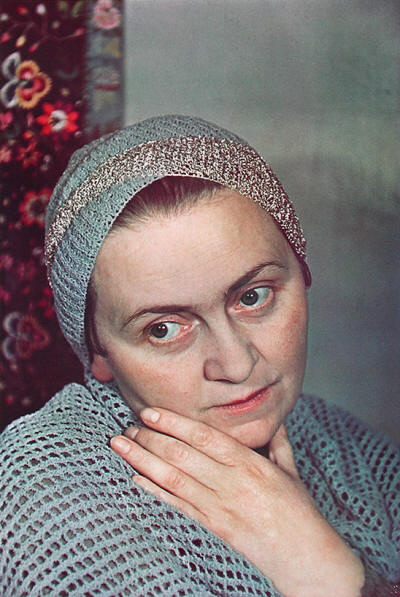
Adrienne Monnier, 1938, by Gisèle Freund
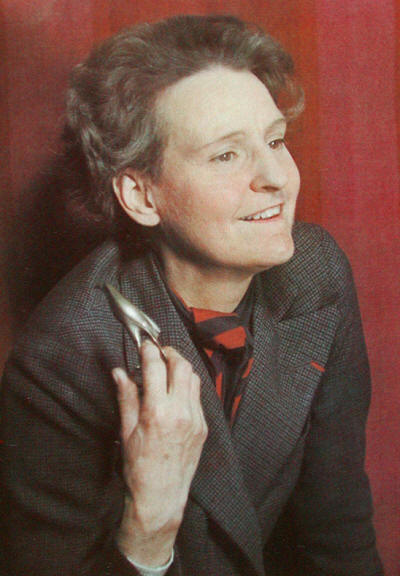
Sylvia Beach, 1938, by Gisèle Freund
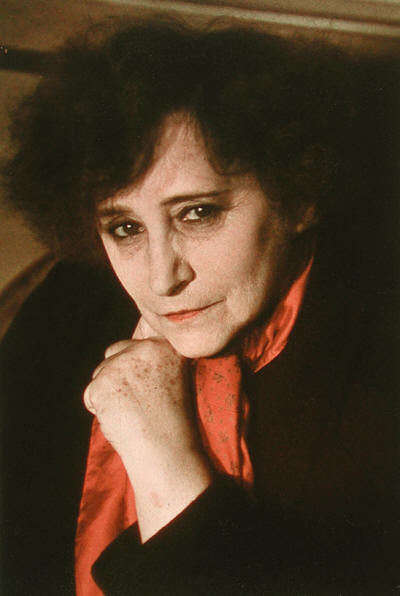
Colette, 1939, by Gisèle Freund
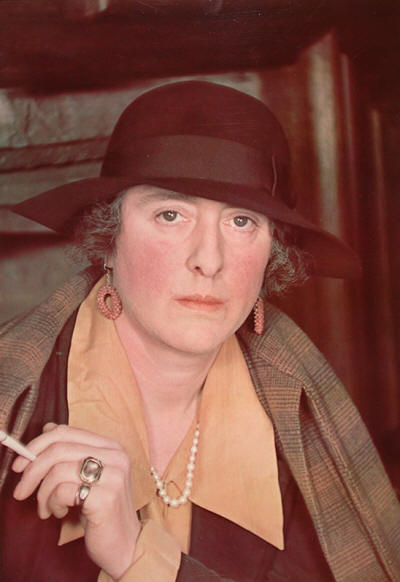
Vita Sackville-West, 1939, by Gisèle Freund
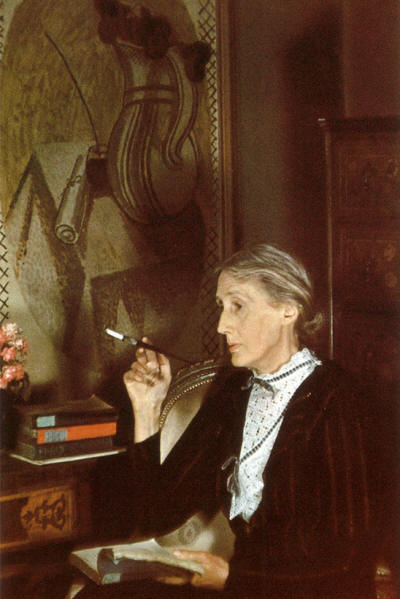
Virginia Woolf, 1939, by Gisèle Freund
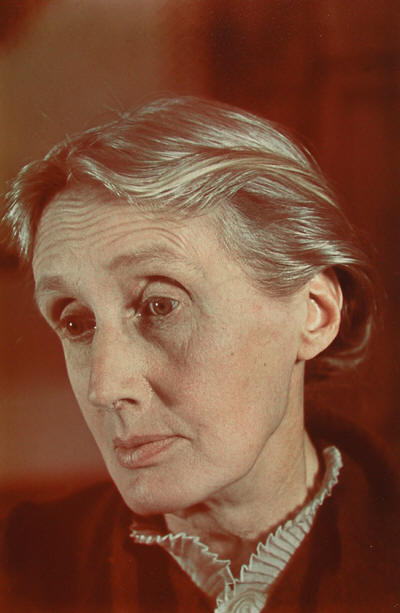
Virginia Woolf, 1939, by Gisèle Freund
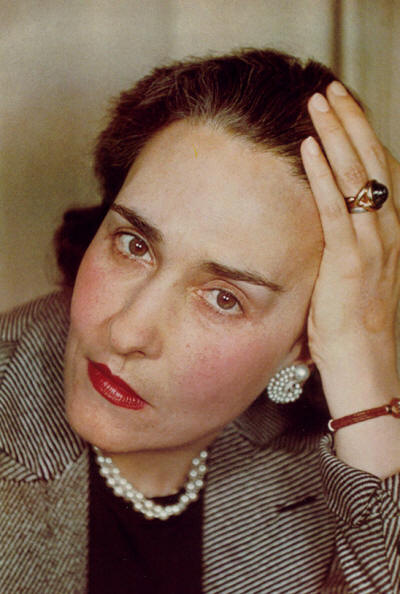
Victoria Ocampo, 1939, by Gisèle Freund
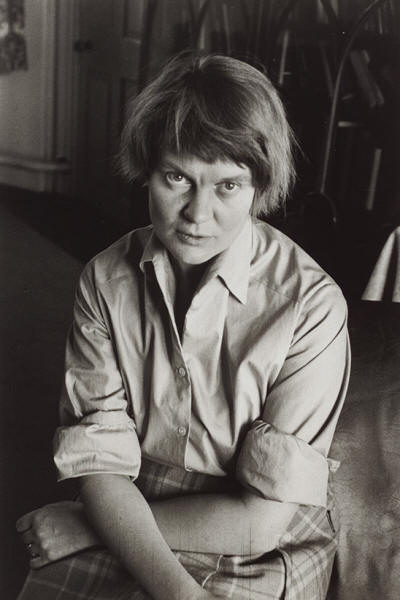
Iris Murdoch, 1939, by Gisèle Freund
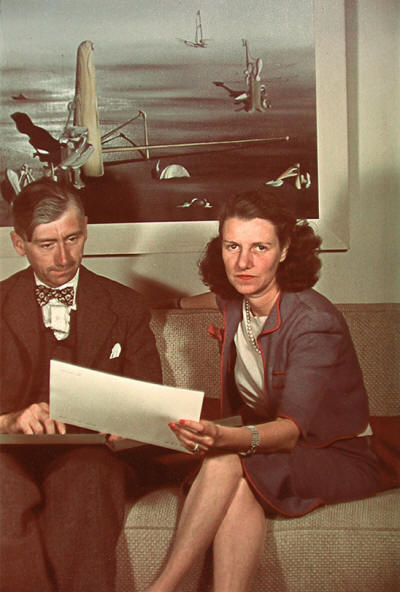
Herbert Read and Peggy Guggenheim, 1939, by Gisèle Freund
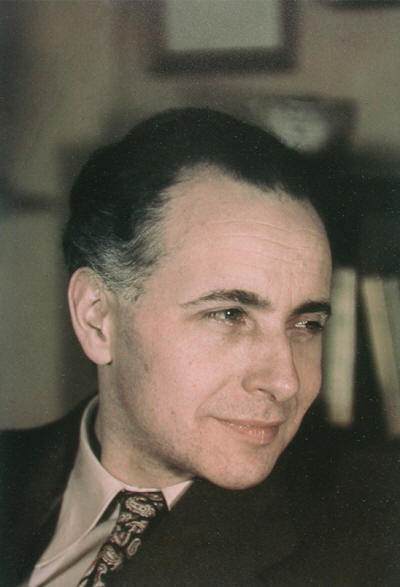
Louis Aragon, 1939, by Gisèle Freund
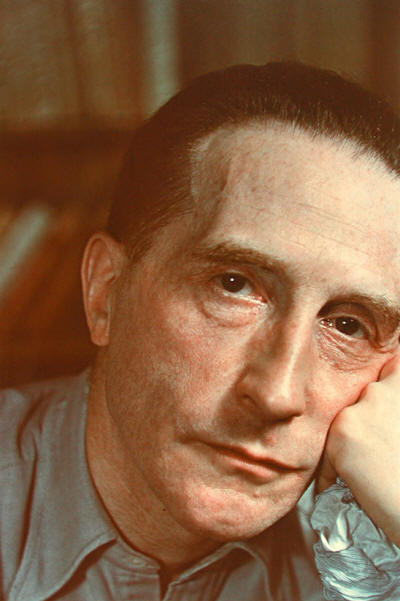
Marcel Duchamp, 1939, by Gisèle Freund
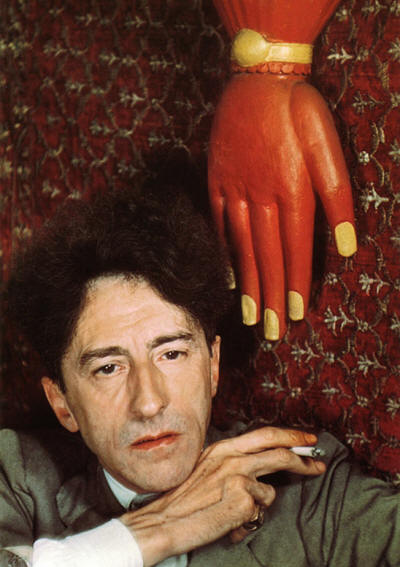
Jean Cocteau, 1939, by Gisèle Freund
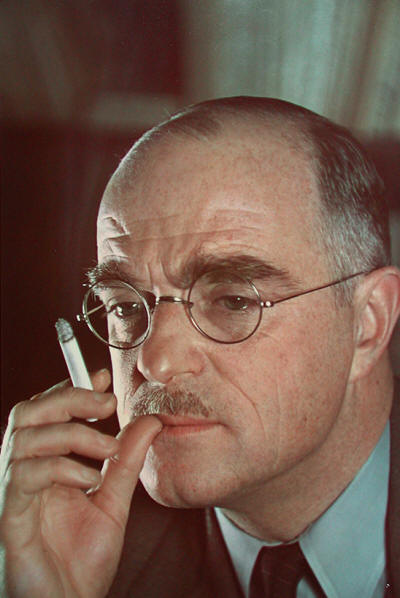
Thornton Wilder, 1939, by Gisèle Freund
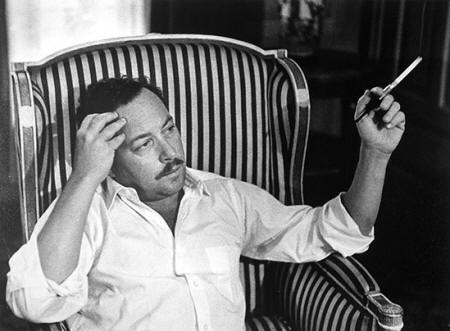
Tennessee Williams, 1939, by Gisèle Freund
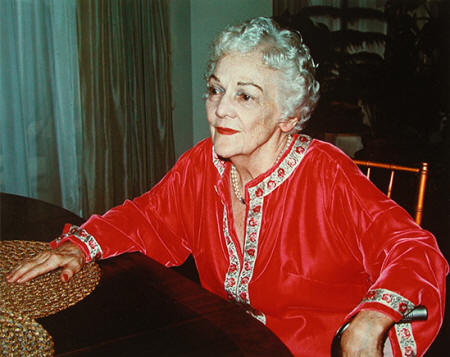
Katherine Anne Porter, 1939, by Gisèle Freund
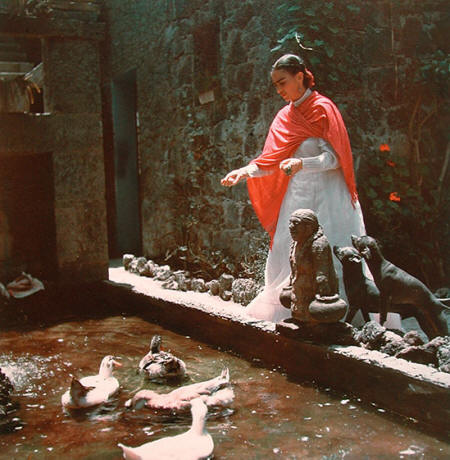
Frida Kahlo, 1951, by Gisèle Freund
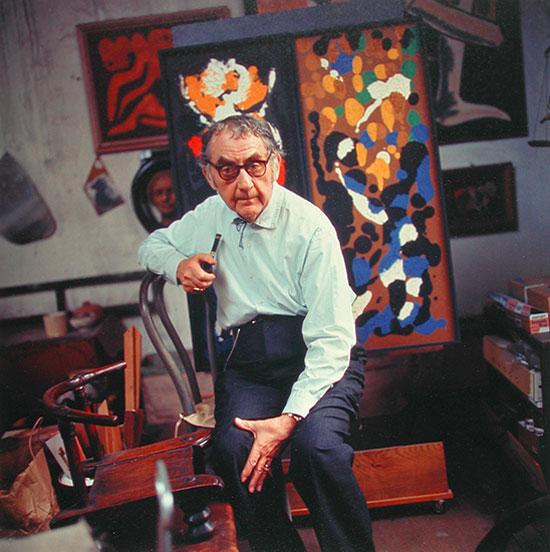
Man Ray, 1967, by Gisèle Freund
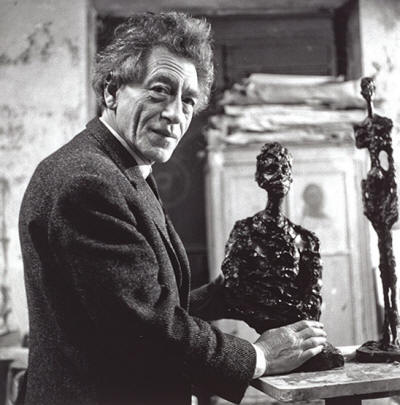
Alberto Giacometti, 1966, by Gisèle Freund
Many of the artists Freund photographed during those years were her friends, and many, like Freund, were gay or lesbian, living and loving with a relative openness that would not be seen again for many decades.
Freund was born into an affluent Jewish family on December 19, 1908 (some sources say 1912) in the town of Schoenberg near Berlin. Her father was an industrialist who appreciated the arts. He took his young daughter to museums and, when she was twelve years old, gave her her first camera, a compact Leica, with which she began to document life around her.
Freund attended the University of Frankfurt, studying sociology and working with leftist student groups to fight the rising tide of fascism, while continuing to take photographs. One of her most striking early photos focuses on two girls in the front of a teeming square of demonstrators at a May 1, 1932 anti-Nazi march. The picture evinces Freund's skill at creating a personal connection between her subject and the viewer.
In 1933, as German society became more and more repressive, a friend warned Freund that as a Jew and a leftist she was likely to be arrested soon. She left Germany immediately, on a train bound for France, carrying with her little more than a suitcase, some film, and a camera.
Once in Paris, Freund continued to work on her art and began studying at the Sorbonne, where she earned her Ph.D. in 1936. In June 1935, she photographed many of the writers and philosophers who had come to Paris from 35 countries to meet at the anti-fascist Congress for the Defense of Culture.
By 1935, Freund had become part of the artistic community that frequently gathered at two Left Bank bookstores, Shakespeare and Company, owned by Sylvia Beach, and La Maison des Amis des Livres, operated by Beach's lover, Adrienne Monnier. Freund and Monnier made an immediate and intimate connection, and in 1936, while Beach was on an extended trip to the U.S., Freund moved into the apartment that Beach had shared with Monnier.
As she had for many other artists and writers, Monnier supported Freund's creative career. In 1936, she helped translate and published Freund's doctoral thesis about the sociological role of photography, a daring choice for a doctoral thesis since photography was not at that time taken seriously in the academy.
With Monnier's help, Freund married a Frenchman named Pierre Blum (or Bloom) in order to obtain a visa to remain in France legally. They divorced within a few years. Armed with her new papers, Freund took a job as a photojournalist with Life magazine, which published "Northern England," her acclaimed photodocumentary of economic hardship in Britain, on December 14, 1936.
In 1939, Freund used newly available technology to blow up her pictures of Left Bank artists to larger-thanlife size, and Monnier mounted the first exhibit of the photographs in her bookstore. The same year, London's Peggy Guggenheim gallery also hosted an exhibit of Freund's photographs of intellectuals and artists such as T.S. Eliot, André Gide, Virginia Woolf, and Vita Sackville-West.
Although some criticized her photographs for the use of color, Freund defended the innovation as being truer to life than the prevailing black-and-white studio portraits of the day. Her exhibitions drew positive attention largely because her images reflected her deep connection with her subjects. She intended that her photographs reveal her models' inner nature, thus she made an attempt to know her subjects and their work well before photographing them. Her image of Virginia Woolf is particularly noteworthy for its depth of insight into the writer's haunted psyche.
Because of her skill in psychological portraiture, she was chosen to take James Joyce's portrait for the dust jacket of Finnegan's Wake and André Malraux's portrait for the dust jacket of Man's Fate.
Shortly after the 1939 exhibitions, Freund was forced to flee Paris as the war and fascism were approaching. With the support of the Argentine writer Victoria Ocampo, she gained entry to Argentina, where she spent the war years working as a photojournalist, capturing stunning images of the Tierra del Fuego and photographing many South American artists, writers, and political figures, including Eva Peron.
In 1945, Freund spent time in Mexico, where she photographed and became friends with bisexual artist Frida Kahlo. However, she continued to think of France as her home, and in 1952, she returned there to live.
She became the only woman to work for Magnum, a cooperative photo agency that had been founded in 1947 by Henri Cartier Bresson, Robert Capa, and other photographers. However, in 1954, when she was refused entry to the U.S. because her name appeared on a McCarthy-era blacklist, Magnum fired her, fearful that her socialist sympathies would damage the agency during the anti-Communist fervor of the time.
Despite this reversal, Freund had no problem getting work as a photojournalist, and her pictures appeared in such publications as Paris Match, Art et décoration, Verve, and Images du monde.
In 1968, Freund became the first photographer to be honored with a retrospective exhibition at the Paris Musée d'Art Moderne. And in 1974, she published a revised version of her doctoral thesis as Photography and Society, now widely regarded as a standard work on the subject.
In 1980, Freund received the grand prix national des lettres, a high national honor that made her feel that she had at last been accepted by the French. In 1981 she became even more a part of the French establishment when she was commissioned to make the official presidential portrait of François Mitterand.
During the late 1980s, Freund retired from photography in order, she said, to devote herself to her other grand passion, reading. In 1983, she published a memoir, Three Days with Joyce.
Freund died on March 31, 2000 in her beloved Paris.
My published books: